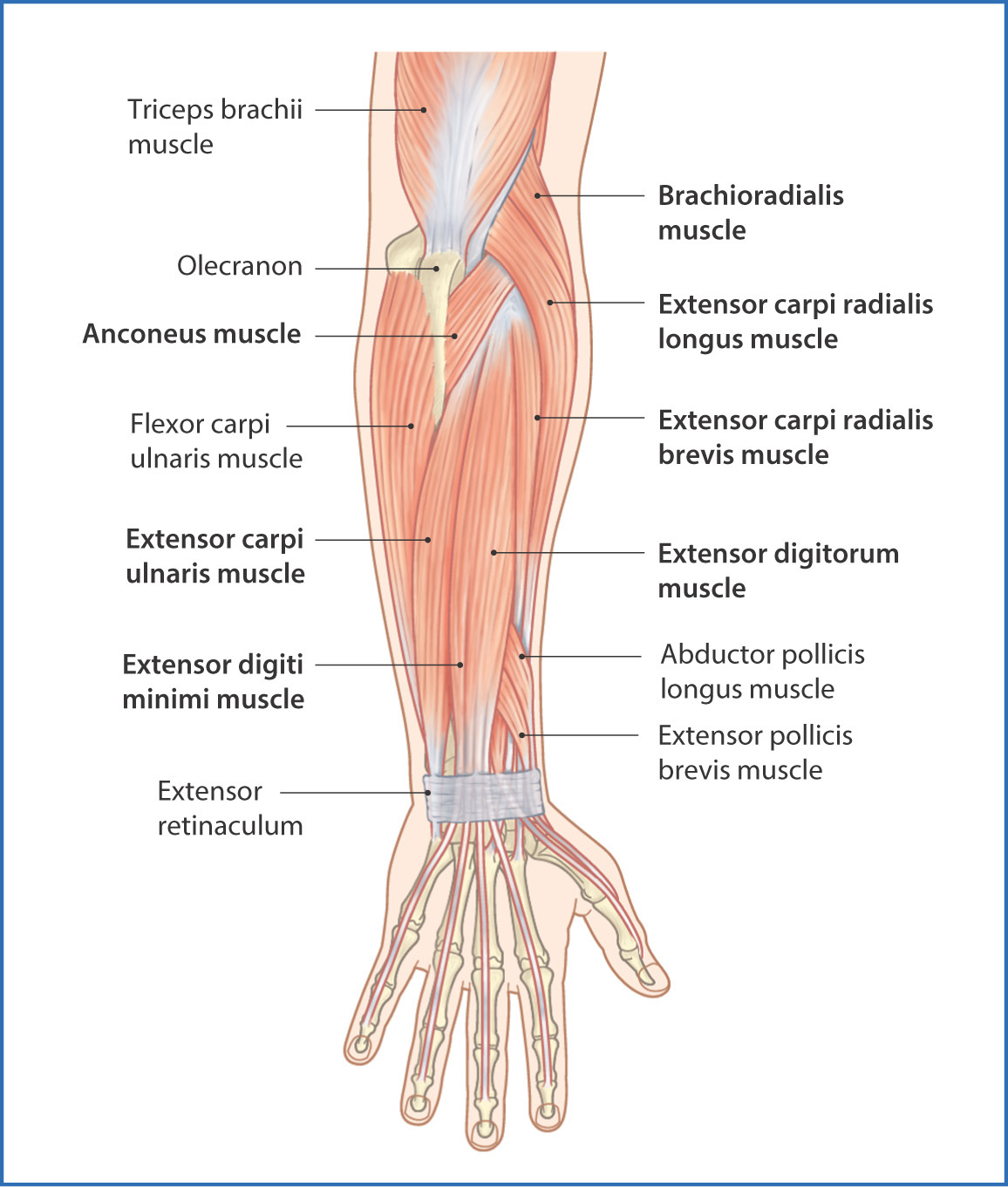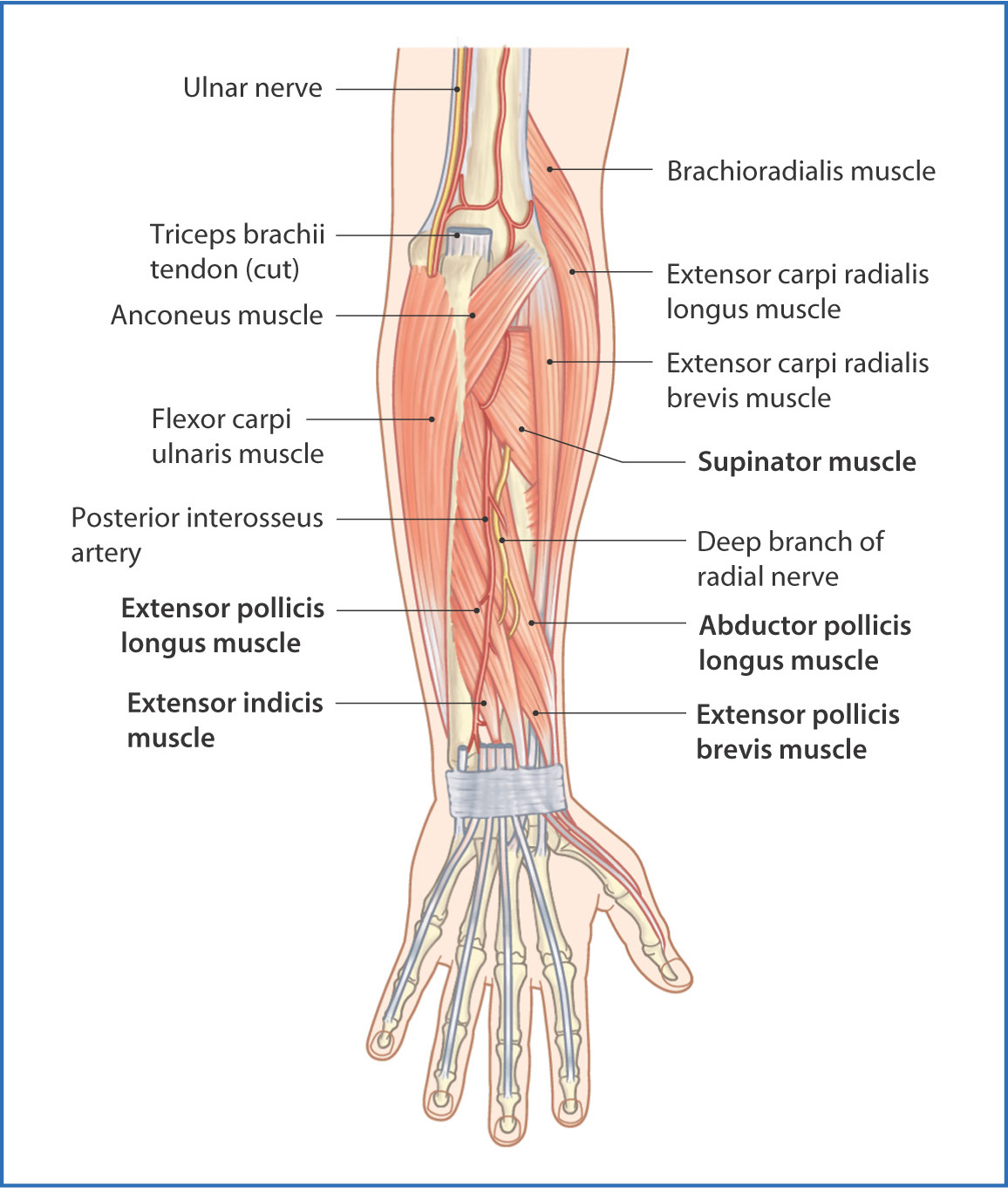
22
Posterior Forearm
The posterior compartment of the forearm is between the elbow and wrist joints, contains 12 muscles divided into superficial and deep groups (Figs. 22.1 and 22.2), and is supported by the radius and ulna (see Chapter 21). The main function of the forearm muscles (except for the brachioradialis and supinator) is extension of the wrist and fingers. The brachioradialis and supinator flex and laterally rotate (supinate) the forearm and hand, respectively.

FIGURE 22.1 Superficial muscles (bold) of right posterior forearm.

FIGURE 22.2 Deep muscles (bold) of right posterior forearm.
Muscles
The superficial muscles of the posterior compartment of the forearm, from lateral to medial, are the
- brachioradialis
- extensor carpi radialis longus
- extensor carpi radialis brevis
- extensor digitorum
- extensor digiti minimi
- extensor carpi ulnaris
- anconeus
- extensor carpi radialis longus
These superficial muscles have a similar superior attachment to the humerus, mostly through the common extensor tendon attached to the lateral epicondyle (extensor carpi radialis brevis, extensor digitorum, extensor digiti minimi, and extensor carpi ulnaris muscles). The brachioradialis and extensor carpi radialis longus muscles originate from the lateral supracondylar ridge and the anconeus muscle from the posterior surface of the lateral epicondyle. From this common area, the muscle bellies of the superficial muscles run parallel to the axis of the forearm toward the wrist and hand. The primary action of these superficial muscles is to extend or abduct the wrist. Unique to the superficial muscle group, because they perform elbow functions, are the brachioradialis and anconeus muscles.
The anconeus muscle is a small muscle on the lateral aspect of the elbow that extends from the lateral epicondyle of the humerus to the lateral olecranon process of the ulna. It assists the triceps brachii muscle in extending the forearm.
The deep group of muscles in the posterior compartment of the forearm, from lateral to medial, are the
- supinator
- abductor pollicis longus (Latin pollex = thumb)
- extensor pollicis brevis
- extensor pollicis longus
- extensor indicis
- abductor pollicis longus (Latin pollex = thumb)
These deep muscles originate from the shafts of the radius and ulna and from the interosseous membrane, and their slender tendons insert onto the metacarpals and phalanges (wrist and hand bones). They all extend the thumb and index finger, except for the supinator, which originates from the lateral epicondyle of the humerus and wraps medially onto the proximal third of the shaft of the radius. This unique path enables the supinator to supinate the forearm by rotating the radius and palm of the hand laterally (Table 22.1).
TABLE 22.1 Posterior Forearm Muscles

Stay updated, free articles. Join our Telegram channel

Full access? Get Clinical Tree


